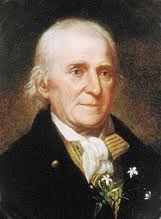 Juniper Run Kayak (& Canoe) tours
Juniper Run Kayak (& Canoe) tours
Group size: 1 – 24 people
Trip time: 4 – 4.5 hours
Skill level: Intermediate, narrow winding creek can be a challenge for novices
Cost
Most guided tours are $50 per person. (includes boat, paddle, vest, shuttling and your guide)
Using your Own Boat – $40. (many paddlers with their own boats like to join us to learn more about the history, archaeology and natural history of these rivers).
Dates
Join a scheduled tour (see tour calendar ), or suggest one. Find a free date on the calendar and suggest the trip of your choice. If there are no conflicts, we’ll post it!
OR
Schedule a private tour. Use contact form, email us at [email protected] or call (386-454-0611)
Location
Check the River Locator Map or Click the link below for a local map and then use zoom and panning arrows to explore the area. (Note: the marker is NOT our meeting place, but a nearby landmark.
Local MapDescription
The first mile of this gentle spring run is one of the most magical places in Florida. A thin sheet of crystal clear spring water skims your boat over the white sand bottom (from an ancient sand dune), as you pass through a fantastic sub-tropical forest of palms, hardwoods and lush under story of shrubs, vines, ferns and herbaceous plants. This is Fern Hammock. After a while, the surrounding forest changes, almost imperceptibly, to a higher and drier forest of oaks, hickory and pine. Then, by the time you’ve become used to your new surroundings, the flood plain widens again and the river carries you through an alternating series of narrow, myrtle shrouded passageways and open marshes of cattail and wild rice.
Once you’ve paddled this river, you’ll know why Marjorie K. Rawlings considered naming one of her books “Juniper Creek.” Her editor, having never seen the river and therefore being immune to it’s spell, suggested she think of another name. She renamed it “the Yearling”.
Highlights
This beautiful stream cuts through the heart of the Juniper Prairie Wilderness area, which is home to a healthy population of Florida black bears. On our last trip here (I can’t believe it’s been nearly a year) we saw a mother and her cub. But we were lucky. Chances of seeing any of these elusive, mostly nocturnal animals are slim. Birders will enjoy the chance to see a variety of birds in the different types of terrain offered on this trip. There are a number of gators, although our old buddy, a giant 12 – 13 footer which we enjoyed seeing on nearly every trip, basking in the open flats, was killed a few years ago. Watch for the colony of otter’s living in the flats in the last couple of miles. They have become adept at looking cute and getting fed in return. While we all know feeding wildlife is a harmful practice, (right?), it has resulted in some sociable otters.
 Wildlife
Wildlife
The most notable wild residents of Juniper Run are river otters. In the last mile of the trip, a colony of otters have been entertaining paddlers with their curious antics for years. This is also bear country, though we’ve only seen two on our explorations here. Upstream, you’ll see songbirds and other forest species. On the lower section, you’re more likely to spot wading birds. Egrets, herons (Great Blue, little blue and green-backed) and bitterns stalk the shore and thick marsh vegetation. Some years, ospreys nest along the run. If you don’t see them, don’t worry, they’ll see you. They’ll let you know with their persistent and loud “requests” for you to paddle-on.
Jack-in-the-Pulpit (Arisaema triphyllum) – The roots of this interesting small plant have been used by natives of both North and South America for food and medicine. Like many other edible wetland plants, these roots will set your mouth on fire if eaten raw. They must be dried or roasted before using. The strange hooded spathe, overhanging and partially concealing the erect spadix inspired this plants name, as well as some of the old lore associated with it. According to the ancient Doctrine of Signatures, the phallic look of the spadix meant the plant would enhance fertility. As testament to this property, William Cole, a 17th century proponent of the doctrine, claimed that these plants, when eaten, “are notable for stirring up the inclination to copulation.” Full disclosure, most people I know who’ve eaten these roots seemed to be immune to this charming inclination.
NOTE: This river is a good place to look for these plants, as they grow right along the river bank in several places. However, it is illegal to disturb these plants here in the National Forest. Look, but don’t pick!
 History
History
When William Bartram explored this area in 1774, he referred to the beautiful Juniper Creek as Six-mile run. He was so enthralled with the fauna, that he set up camp and spent the day collecting many local plants. Marjorie Kinnan Rawlings loved it here also, and wanted to name one of her novels “Juniper Creek.” Her editor encouraged her to use another name for the book. I shutter to think of how many tourists might crowd this delicate stream daily, eager to experience Rawlings’ Florida, if the books title hadn’t been changed to “The Yearling.”
Difficulty
This is a winding stream with a moderate (by Florida standards) current. Be prepared to play bumper kayaks. Canoes should be used only by experienced paddlers and/or those who have a strong (preferably blissful) relationship. I’ve seen some previously happy relationships descend into “Jerry Springer” train wrecks when they use canoes on this river. One lady (not in our group) even hiked out. Anyway, it winds.
